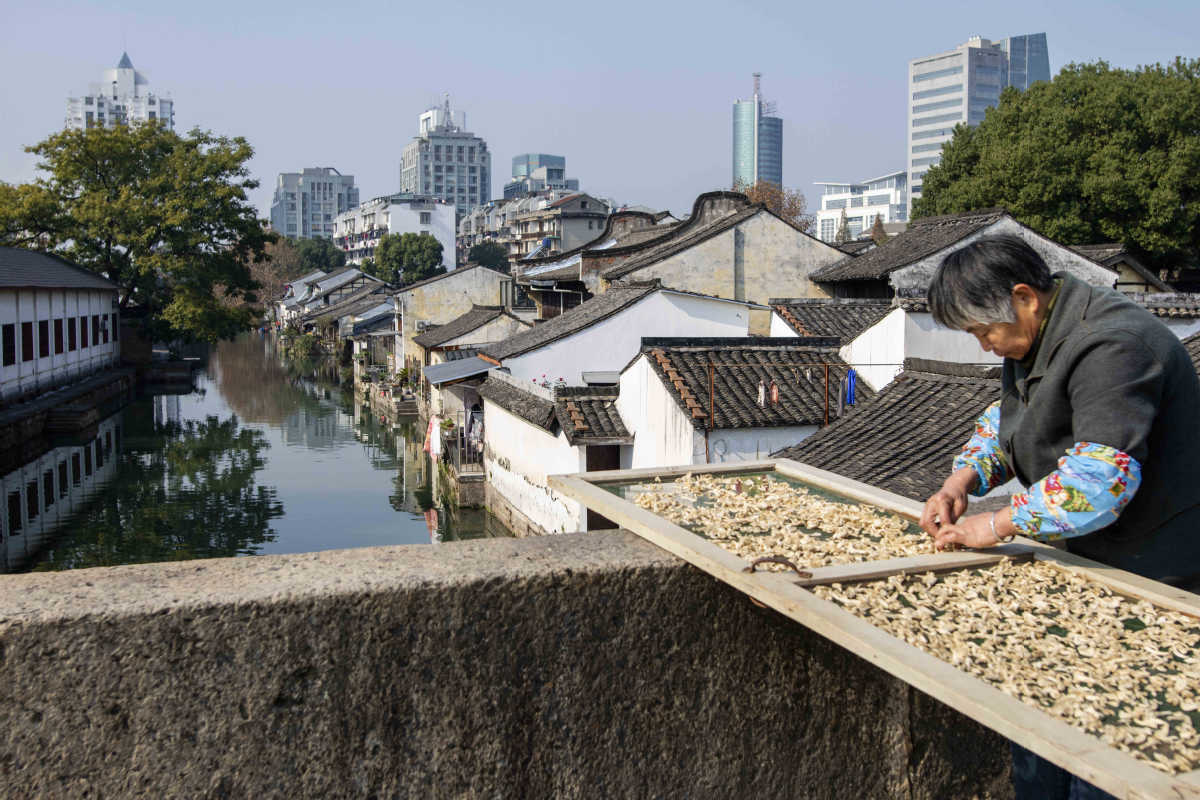Historical city creates low skyline to highlight cultural heritage

A resident dries turnip slices on a stone bridge in the old district in Shaoxing, Zhejiang province. PHOTO PROVIDED TO CHINA DAILY
Unlike many cities that compete to build more skyscrapers, an eastern Chinese city is undertaking a renovation project to lower its skyline.
The city of Shaoxing, Zhejiang Province, has listed a total of 178 high-rise buildings in the the old urban district as potential structures where floors may need to be cut. The aim is to give the 2,500-year-old city a relatively flattened and uniform skyline.
The move is designed to stop the buildings from blocking the view of the city's iconic 9.09-square-km old district where literary figures in ancient China used to live and have left behind a huge amount of cultural heritage.
"In preserving Shaoxing's cultural heritage, we follow the principle of keeping alive their original forms," said Xu Juemin, director of Shaoxing's city conservation office.
On top of the 178-building list is a hotel that was once the city's landmark and tallest building.
The hotel, along with another tall building, were located right in front of the entrance of Shaoxing's historical district.
"Local people often dubbed the buildings unfavorably as two 'candles' that looked out of place in the historical area," said Zhang Feng, an executive of a cultural company in charge of renovating the neighborhoods. "Many visitors from out of town can't even find the entrance of the neighborhoods because of the buildings."
Creating a low-flung skyline has long been on the mind of Shaoxing's city planners. In 2013, authorities had set the height limit of buildings in its old district at 24 meters.
In 2019, after widely soliciting public opinion, the municipal legislature put into effect a regulation on protecting and utilizing the old district, in which the height limit was written into law.
After careful planning and construction, two government buildings, with 10 and 12 stories respectively, were both lowered to five stories and converted to museums.
Shaoxing has also undertaken other programs in its old district to better preserve its cultural heritage, including the relocation of government offices and the renovation of residents' homes.
In 2020, 77 residential quarters in the old district were renovated. "The program not only gives the district a facelift but also greatly improves our living condition," said local resident Yang Xingquan.


 Shaoxing Showdowns
Shaoxing Showdowns Zhejiang: A Decade of Progress
Zhejiang: A Decade of Progress Shaoxing in expats' eyes
Shaoxing in expats' eyes